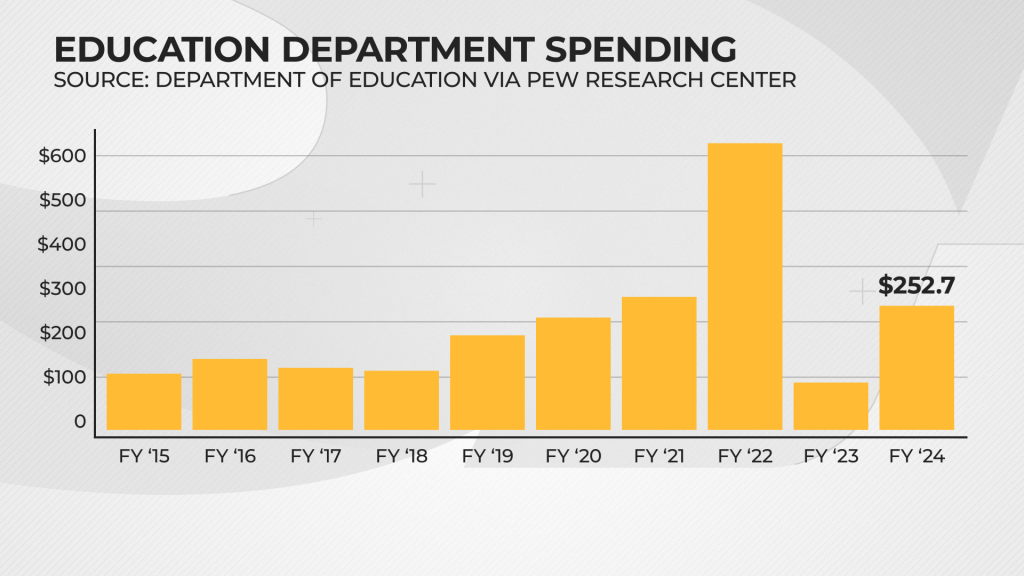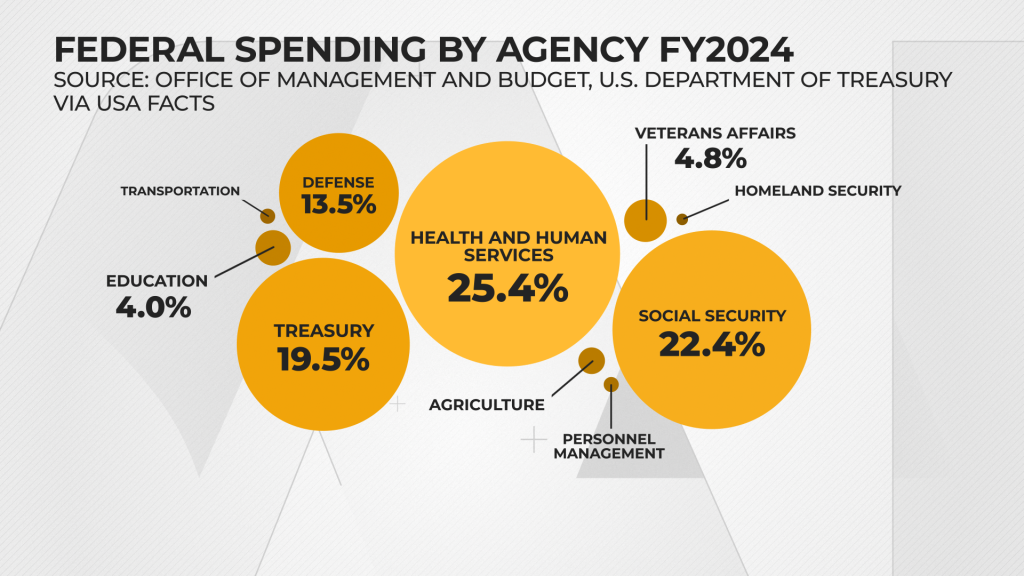- President Donald Trump has issued an executive order aiming to do away with the Department of Education. The president has been critical of the state of education in the U.S. and the agency’s influence.
- The agency is relatively new, but its origins go back to 1867. If the president succeeds, it would mark the second time the Department of Education has been shut down.
- The Department of Education spent more than a quarter of a trillion dollars in fiscal year 2024, accounting for 4% of all federal government spending.
Full Story
President Donald Trump signed an executive order that takes steps to dismantle the Department of Education on Thursday, March 20. The move culminates decades of efforts by Republicans to shut down the agency, and will take an act of Congress to permanently close it.
Trump’s latest order builds on a promise he made on Inauguration Day.
“We have an education system that teaches our children to be ashamed of themselves, in many cases, to hate our country, despite the love that we try so desperately to provide to them,” Trump said during his inaugural address in January. “All of this will change, starting today, and it will change very quickly.”
The agency has been shut down before
The current Department of Education has technically only existed since 1980, but its origins date back to 1867.
President Andrew Johnson created the first Department of Education to collect information and statistics about schools throughout the country. However, because some worried it would have too much control over local schools, the government downgraded the agency to the Office of Education a year later.
Starting in the 1950s and continuing into the late 1970s, countless factors contributed to the expansion of federal education funding. In October 1979, Congress passed the Department of Education Organization Act, which consolidated several federal agencies. The Department of Education officially reopened its doors in May 1980.
What’s the Department of Education’s purpose?
“The mission of the Department of Education (ED) is to promote student achievement and preparation for global competitiveness by fostering educational excellence and ensuring equal access for students of all ages,” the agency website reads.
The Department of Education essentially oversees education policy and provides funding for programs and individuals in need.
Globally, the U.S. ranks ninth in reading, 16th in science and 24th in math, according to the latest figures from the Program for International Student Assessment.
How much does the department spend in one year?

For fiscal year 2024, the Department of Education’s gross cost for its programs and operations reached roughly $252 billion. Total outlays, which account for certain spending adjustments, totaled $268 billion.
The expenditure accounts for a total of 4% of federal government spending for the year.
The Department of Health and Human Services takes 25.4% of the total budget due to Medicare and Medicaid costs. The Social Security Administration makes up about 22.4% of the budget, while the Treasury Department takes up 19.5%. The Department of Defense comes in at 13.5%, followed by Veterans Affairs at 4.8% and then the Department of Education at its 4% mark.

Where was the $268 billion spent?
Most of the funding for the Department of Education goes toward colleges and universities.
Sixty percent, or $160.7 billion of the budget goes straight to the office of Federal Student Aid. The higher education chunk pays for Pell Grants, work-study programs and loans.
White House press secretary Karoline Leavitt said Thursday, March 20, the department would continue managing federal student loans under Trump’s action.
Roughly 25%, or $68.1 billion, gets transferred to states. Another $39.9 billion goes to elementary and secondary education grants.
The department sent $18.8 billion to schools with a large number of poor, neglected or “educationally disadvantaged” students; it spent $15.5 billion on special education programs across the country and it allocated $5.5 billion to general school improvement programs, like after-school programs and classroom technology.
How do states benefit from Department of Education money?
The agency provided roughly 14% of funding for the nation’s public schools in fiscal year 2022, according to the most recent Census data. Not all of that federal funding comes from the Department of Education — some of it supports school meals from the Department of Agriculture — but the majority is Department of Education funding.
The state that received the largest share of its funding from the federal government is Mississippi at 23.3%, according to a Pew Research Center analysis. Mississippi was followed by South Dakota, Montana and Alaska. As far as individual school systems go, Detroit receives nearly 50% of its funding from the federal government.